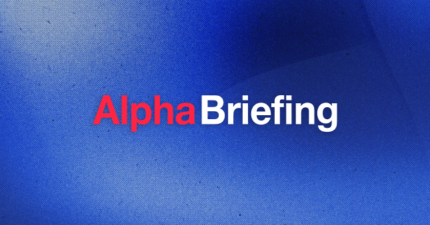Exploring Neobanks: Revolutionizing Banking Around the Globe
Before the 21st century, traditional financial institutions offered the only banking option for people worldwide. With the rise of mobile technology and the internet, digital banking solutions are becoming more commonplace.
In particular, neobanks attract younger customers who desire digital-first, modern banking solutions without compromising security and traditional banking features. Not only do neobanks provide an alternative to traditional banking, but they can also serve underbanked populations in developing countries.
In this article, we’ll explain everything you need to know about neobanks and how they’re revolutionizing banking across the globe.
What Are Neobanks?
Neobanks are digital banks that operate without traditional physical bank branches.
Neobanks are modern, mobile-first banks without physical locations focused on ease of use and lower costs for basic banking needs.
Their lack of outdated infrastructure lets them prioritize digital experience. Neobanks offer virtually anyone the opportunity to easily set up a bank account. You can sign up for a neobank by using an online application and create an account within minutes.
Usually, the financial provider will send a debit card to the customer’s address and allow them to access their account features and funds via a mobile app. Some of the most popular neobanks are:
- Chime
- SoFi
- Revolut
- Aspiration
- Current
Since they lack a traditional financial infrastructure, neobanks can serve both domestic and international audiences.
The Key Characteristics of Neobanks
Neobanks are different from traditional banks in a lot of ways. Here are some key characteristics of neobanks:
Digital First
Neobanks operate entirely online, without physical branches. This allows them to keep costs down and provide a more user-friendly experience for customers who are increasingly comfortable managing their finances online.
Most Americans prefer to bank digitally via a mobile app or website. Neobanks provide this option, making sure their customers don’t have to visit a local branch to access special account features.
Many neobanks offer 24/7 customer support so their customers can resolve account issues expeditiously.
Focus on Innovation
Neobanks are known for their innovative approach to banking products and services. They often use financial technology (fintech) to make it easier for customers to manage their money, such as offering real-time spending tracking, budgeting tools, and automated savings features.
Neobanks only operate digitally, meaning their stock in trade is their online customer experience. To compete with one another, neobanks strive to make account navigation and online banking features accessible and convenient.
Target Specific Customer Segments
Neobanks often target specific customer segments, such as millennials or small businesses, with tailored financial products and financial services. This allows them to better understand and meet the needs of their customers.
Millennials and Gen Z are specifically switching to neobanks, citing their disdain for complicated and outdated banking structures. Many neobanks recognize this trend and market to these demographics.
Lower Fees
Without physical infrastructure costs, neobanks have less overhead. This allows them to offer low-fee or even no-fee bank accounts and services compared to traditional banks.
Some neobanks offer modern banking services for free. In contrast, traditional banks usually charge monthly service fees, only waiving them if you meet certain criteria, such as a minimum balance.
By registering for a neobank account, customers can store their money on their terms without worrying about pesky monthly fees.
Automated Processes
Neobanks streamline and automate most of the manual banking processes that traditional financial institutions deal with. This includes:
- Account opening
- Money transfers
- Expense tracking
With the power of artificial intelligence (AI) and machine learning, many basic banking functions can happen instantly or with little human involvement.
Services Offered by Neobanks
Neobanks offer a wide range of banking services, including:
Access to Cryptocurrencies/Digital Assets
Neobanks represent a modern shift in worldwide commerce. Many of these organizations have begun to appeal to crypto investors.
For example, the French bank Revolut allows customers to:
- Participate in cryptocurrency trading for more than 30 different currencies.
- Receive access to an in-house crypto wallet to simultaneously manage traditional and digital assets.
- Take advantage of competitive exchange rates to seamlessly transition between fiat and digital currencies.
While many traditional banks are slowly embracing crypto and digital assets, several neobanks are promoting crypto-friendly services to jump ahead of this trend.
Checking and Savings Accounts
The most common banking service neobanks offer is checking and savings accounts. Many neobanks provide combined checking and savings accounts for their customers.
This means you don’t have to open a separate savings account after registration. In addition, neobanks give customers the comfort of accessing their accounts from their smartphones.
Customers no longer have to visit a local branch because of a checking account issue since neobanks provide all the features you need from the convenience of a mobile app.
Debit Cards
Upon setting up a checking account, a neobank will typically ship a debit card to the customer’s home or business address.
These debit cards aren’t prepaid, meaning they’re automatically tied to your account balances. As a result, customers can use neobank debit cards for a wide variety of daily purchases and even direct deposit.
Mobile Banking Apps
Perhaps the greatest feature neobanks offer is their mobile banking apps. Neobank apps are typically user-friendly, giving customers a seamless viewing experience.
Mobile banking apps offer features such as:
- Mobile deposit
- AI chatbots
- Bill payments
- ATM locator
- Fraud alerts
- Personalized banking
- Crypto wallets
Automated Savings Features
Many neobanks offer automated savings features. Customers can enable this feature to instantly draw money from their checking accounts into their savings.
This feature also makes it possible to automatically add funds to a savings account. For example, a customer can have a portion of their funds moved to their savings account on payday.
The International Growth of Neobanks
The neobank market is growing tremendously year after year. According to market data from SEON, here are some notable industry insights:
- Experts predict the total transaction value of neobanking will reach $2.6 trillion by 2027.
- The user adoption rate in this sector is estimated to grow by 22.8% in the next five years.
- The countries that have the highest populations with neobank accounts are Brazil, India, Ireland, Singapore, and Hong Kong.
- The countries with the fastest adoption rates are the Philippines, Mexico, and Portugal.
Neobanks Growth in the U.S.
Neobanks aren’t just popular internationally. They are also popular in the United States because of:
- Increased smartphone penetration and mobile internet usage. Neobanks offer customers convenient digital experiences in contrast to obsolete traditional banking services.
- Dissatisfaction with traditional banks. Many customers are frustrated with the tedious process of making payments and opening accounts. Neobanks offer a seamless alternative.
- Advancements in technology. More advancements in critical technology, such as AI and machine learning fuel the development of better digital experiences for neobank customers.
- The current trend of making payments directly by linked bank accounts, versus credit cards and debit cards. Younger generations are using Apple and Google Pay in place of traditional banking cards. Neobanks offers integrations for both.
Neobanks Growth in Asia
According to a recent market report, the Asia-Pacific Neobanking market is expected to increase to 49.2% by 2026.
The reason behind this popularity is that many banking customers in this region appreciate that Neobanks don’t require support from traditional banking solutions.
Customers are able to easily set up bank accounts and participate in their local economies without relying on a conventional bank account.
How Do Neobanks Make Money?
Many neobanks offer low or no fees for their customers. Nonetheless, these financial institutions implement the following revenue models to manage their operating costs and deliver an incredible customer experience:
Interchange Fees
Interchange fees are the fees that merchants pay to banks when customers use their debit cards to make purchases.
Neobanks earn a portion of these interchange fees, which can be a significant source of revenue, especially for neobanks with a large customer base and high transaction volume.
By charging interchange fees, neobanks avoid needing to impose large monthly service fees. By targeting massive and precise audiences, neobanks can survive and thrive from revenue generated from interchange fees.
Interest on Loans
Some neobanks offer personal loans to their customers, and they generate revenue by charging interest on these loans. The interest rates charged for neobank loans are often comparable to those traditional banks offer.
In addition to offering competitive rates, neobanks provide a seamless digital experience so customers can apply for loans. Unlike traditional banks, neobanks don’t require customers to fill out lengthy paperwork to apply for a loan.
Subscription Fees
Some neobanks offer premium features or services, such as early access to paychecks or enhanced budgeting tools, for a monthly subscription fee. These subscription fees can provide an additional stream of revenue for neobanks.
For example, neobanks may charge a processing fee so customers can access their paychecks early. Depending on the popularity of these features, neobanks can grow their revenues to improve their service offerings.
Partnerships and Referrals
It’s common for neobanks to partner with chartered banks and offer FDIC insurance by extension. Neobanks can earn from referrals since their partners aren’t direct business competitors.
Data Monetization
Neobanks collect a significant amount of data about their customers’ financial behavior. They may use this data to provide personalized financial insights or recommendations to their customers.
Additionally, they may anonymize and aggregate this data to gain valuable market insights and sell it to third parties. Neobanks, and other organizations, must publish privacy guidelines that dictate the sale of first-party data to third parties.
With the growing scrutiny over consumer data security, some neobanks do not engage in this revenue model because of ethical concerns.
Fee Income
Neobanks may charge fees for specific services, such as ATM withdrawals, international money transfers, or overdraft protection. These fees can contribute to their overall revenue.
This may be a downside for customers wanting to avoid fees. For example, neobanks will almost always charge ATM fees since they don’t have physical branches.
Advertising
Some neobanks generate revenue from targeted advertising within their mobile apps or websites. However, this approach is less common among popular neobanks, as they prioritize providing a clean and user-friendly experience.
Avoiding intrusive ads is one way modern neobanks can improve customer engagement while reducing churn.
Investments and Asset Management
Some neobanks offer investment services, such as brokerage accounts or robo-advisors, and they generate revenue from management fees or commissions on investment products.
For example, neobanks can earn a commission every time a customer buys a specific investment product, such as cryptocurrencies and stablecoins.
Financial Education and Consulting
Neobanks can provide financial education resources or offer consulting services to their customers, generating revenue from subscription fees or consulting fees.
This isn’t a widely popular revenue model, as many neobanks offer financial resources for free on their blogs and resource centers.
AlphaPoint Software for Neobanks
Neobanks are ushering in a new financial landscape. These companies rely on cutting-edge financial technology to deliver banking services to their customers.
If you’re a part of a growing neobank or starting a new venture, having access to pre-built, customizable financial technology for exposure to digital assets is key to your success. This is where AlphaPoint comes in.
AlphaPoint offers neobanks integrative API marketplace infrastructure for their existing platforms, meaning they can offer advanced digital-asset-related banking services to existing customer bases without having to develop these features on their own.
If you’re ready to try AlphaPoint for yourself, request a demo today to get started.


